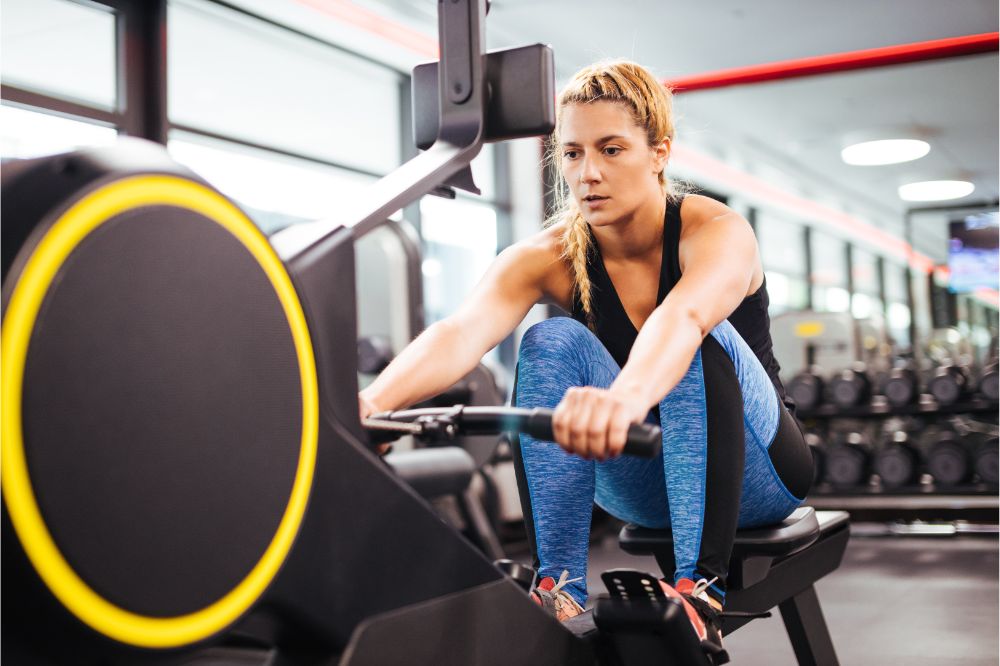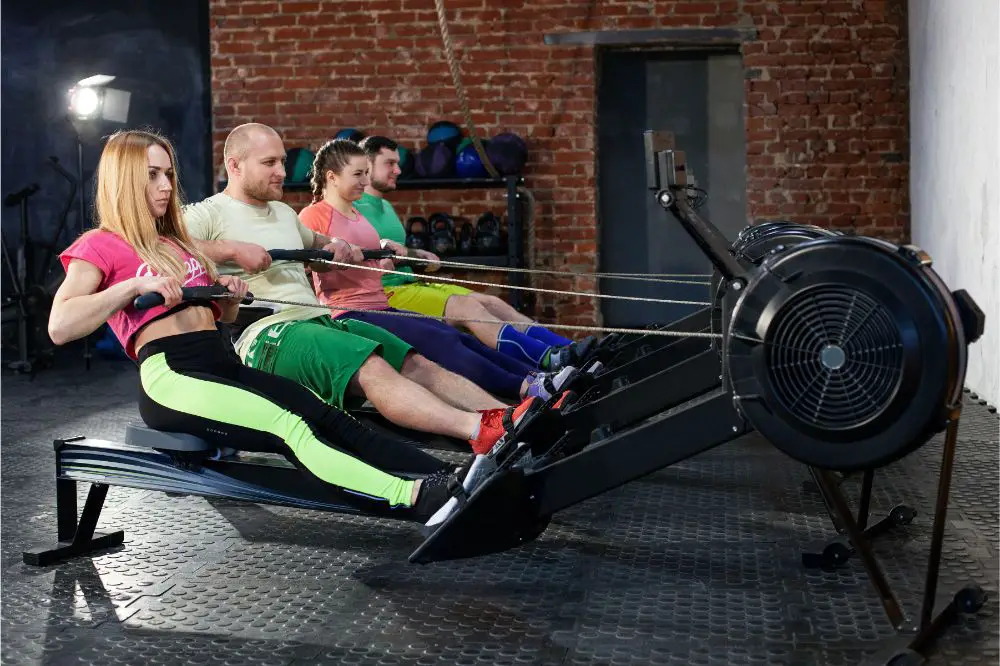Have you ever wondered if rowing is a good workout? The short answer is YES! The rowing machine, aka the ergometer, was long considered a cardio exercise predominantly.
But, with a better understanding of health technology now and the shift from traditional training methods to more high-intensity interval training (HIIT) driven workouts, rowing is rightfully growing in popularity and taking its place as one of the most effective, full-body workouts available.
If you’re thinking about adding this exercise to your existing workout regime, there are a few things you need to know about the rowing machine and what it is good for. So below, we are going to take a look at a few details to help you make up your mind. Let’s get right to it!
How Does It Compare to Other Cardio Machines?
Firstly, it should be pointed out that no one machine can be better than every other in every situation. However, the rower is certainly more conducive to meeting varying individual requirements. Many people avoid other cardio exercises such as running on a treadmill or cycling because of bone and joint pains.
In this regard, the rower is the perfect solution due to its low impact level. But that’s not all. Rowing has a significant edge over other cardio machines because it simultaneously provides a strength and cardio workout. By increasing the resistance level of your rower, you can build more muscle. In contrast, treadmills, elliptical machines, and bikes offer limited muscle-building benefits and focus more on toning muscles.
While receiving a thorough cardio workout, your body also benefits from movement on the rowing machine, similar to those used in deadlifts, leg presses, calf raises, and arm curls. The resistance that you set the machine to acts as the weight, and combined with good form, results in complete cardio and weight training exercise all on its own.
Benefits of Using a Rowing Machine
It’s easy to learn. While rowing can seem more difficult than, say, cycling on a stationary bike, it is quite easy once you try it. It does not require any special equipment and you’re not going to stumble around as you may on a treadmill since your hands and feet are engaged, which improves your stability.
Provides a full-body workout
When combined with good form, rowing can engage up to 86% of your body’s muscle groups. Your arms, shoulders, legs, glutes, back, and core are all being worked simultaneously. At first glance, rowing can seem like a primarily upper body-focused exercise, but in reality, the majority of your power needs to be generated through your legs, into your core, and then to your upper body to complete a full row, thus emphasizing the full-body engagement.
High intensity, low impact
Rowing workouts, even at their highest intensity have virtually zero impact on joints. Since your feet, hands, and buttocks are not supposed to leave the surface, rowing is especially safe for those individuals that are nursing an existing injury or have a more long-term condition.
Improves cardiovascular functions
Just like your body, your heart needs a workout too. As you increase the intensity of your workout, your body starts reacting in different ways. The increased intensity causes your heart to start working a little harder and keep up in transporting blood and oxygen throughout your body during this time. In addition, rowing, like most exercises, helps release serotonin into your body which helps reduce stress, stabilize moods, and improve sleeping habits.
Compliments other exercises
Rowing effectively prepares your body for higher-intensity training. Many cross-training workout regimes recommend rowing as an advanced warm-up technique because it prepares your body for the additional intensity while preserving your bones and joints from overexertion.
Helps improve posture
Since the rowing machine engages your core, back, and legs it can provide several postural benefits which are extremely important, not only in exercising but in everyday life as well. Improved posture reduces the risk of injury, balances muscle strength, and promotes healthy spinal health. All of these are essential to maintaining a healthy functioning body.

Rowing Machine Disadvantages
Up to this point, the rowing machine is probably starting to seem like the perfect piece of exercise equipment. But, like any other exercise, it’s worth understanding any disadvantages associated with avoiding any potential injury.
This is no different with the rowing machine, and while the advantages may outweigh the disadvantages, here are the major points to be aware of.
Rowers are not favorable if you have a back injury
As mentioned earlier, rowing significantly engages muscles, especially the lower back. The pushing and pulling motion will cause some strain, and if you’re already feeling discomfort in the area, it can cause you to lose your form when rowing which could worsen your pain or injury.
It’s easy to overdo it
Once you’re in a good rhythm on a rower, it can become pretty addictive. You may not realize the increase in your heart rate right away because you’re making use of your entire body and are likely feeling the strain in different areas at once.
This can cause you to push yourself further than your body is equipped to handle and result in a higher risk of injury. It’s important to bear in mind overtraining is very risky, and your body depends on rest just as much as it does on exercise to ensure its optimal functioning.
Conclusion
Rowing machines or ergometers allow you to gain a full-body workout in a controlled environment without having to get out on the water with a boat to do so. Rowing provides several health benefits, including (but not limited to) building endurance, complementing other exercise activities, and supporting improved cardiovascular functions.
Compared to other exercise machines, such as the treadmill and stationary bike, the rowing machine engages a greater percentage of your body’s muscles while reducing the impact and accompanying strain on your bones and joints with most other cardio exercises. It is a great option if you would like to work out at home or in the gym.

